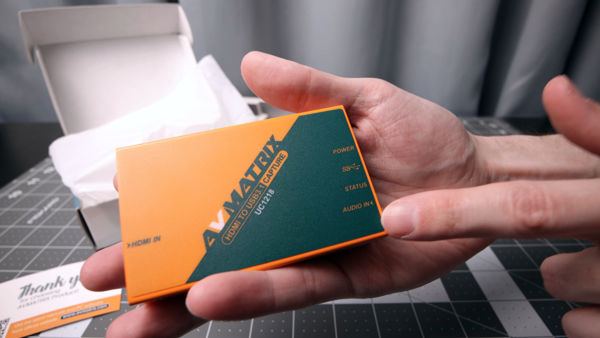I tested out the AVMATRIX UC1218 HDMI USB capture device with clean HDMI capable cameras. I also compared it to a generic HDMI capture device I had on-hand. Let’s take a look in detail!
AVMATRIX sent me this device at no cost to try out and make a video on, so keep that in mind. They had no say or preview of the content I’ve produced about it.
I also have a short version of the video on Instagram Reels and TikTok.
Check it out through my affiliate links:
- Amazon: https://amzn.to/3QjDRLQ
- B&H: https://bhpho.to/3Gt8Noy
- Adorama: https://adorama.rfvk.net/Jr1Bqv
- ebay: https://ebay.us/nHsv68
The UC1218 is specified as having YUY2 uncompressed 1080p 60fps output up to 200 MB/s. At least compared to the no-name capture device I have it sounds promising from a quality standpoint.
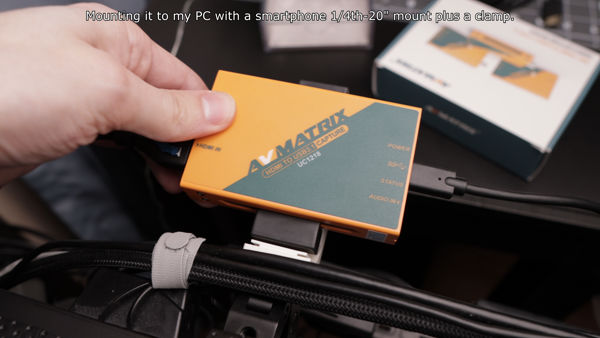
The Canon EOS M6 Mark II, Sony Alpha A6000, and Nikon Z5 were my cameras available for testing.
One quirk I noticed with my old PC is that the ASMedia ASM2142 Chipset USB ports had stuttering issues. The Intel B250 Chipset 3.1 ports work fine. After doing research on ASMedia I suspect it’s their issue more so than the capture device. My computer is an old Intel i7-6700 build from parts.
Is there any difference in output?
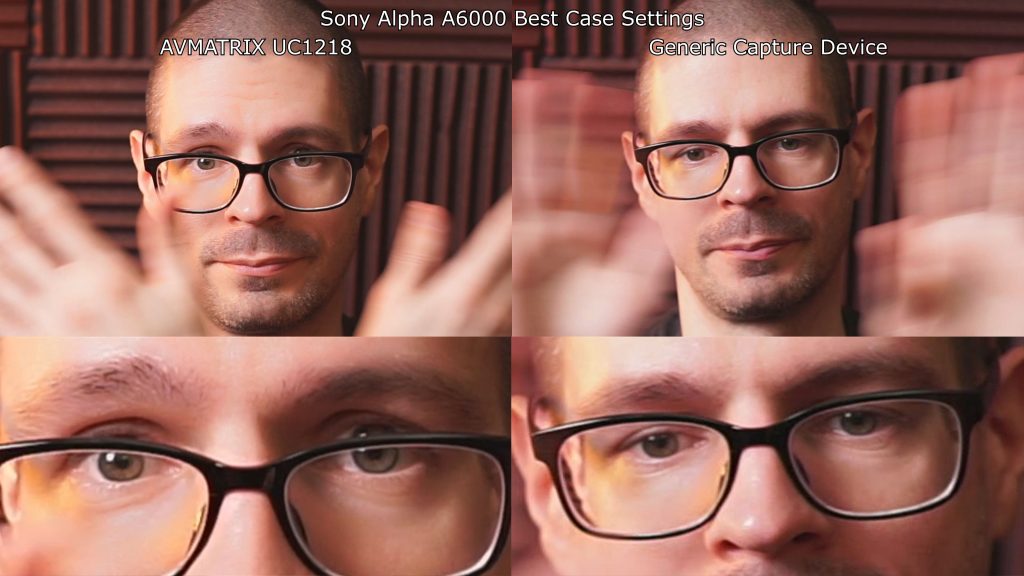
I think the highlights might have slightly more detail, but at standard settings there isn’t much of a difference, in my opinion.
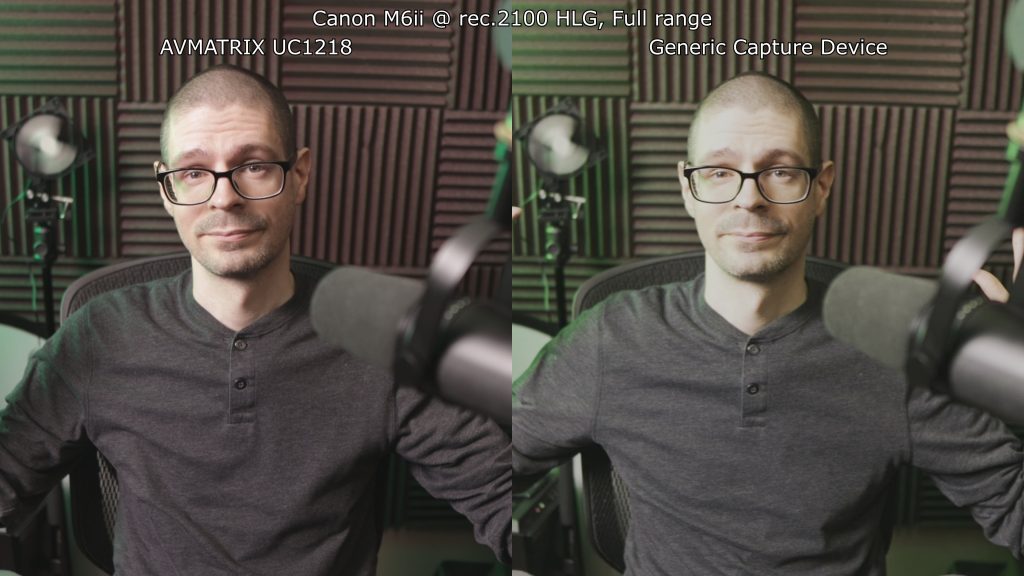
With advanced settings like YUY2, Rec.2100 HLG and high quality encoding settings in OBS there was a significant difference in the quality between the two devices. Sadly I don’t have any of the well known capture devices on-hand like from Elgato, but I’m curious how they would match up. If you want to see me try out devices like that then contact the company and ask them to send me equipment for testing.
The M6ii was running at 4k, but appeared to work fine. Both devices were able to downscale the image to match their 1080p output.
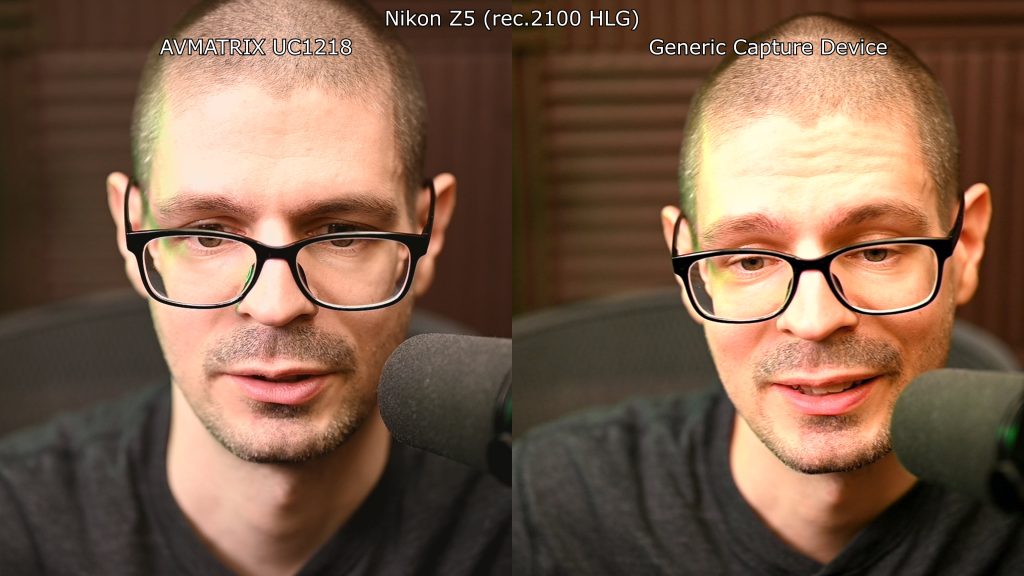
It’s possible the Z5 was outputting 60fps, which could explain the lag with the generic device. I was getting around 5 frames per second into OBS in that case. There is also a clear difference in color as well as in highlights.
My last test was comparing the AVMATRIX to the Z5’s internal recording.
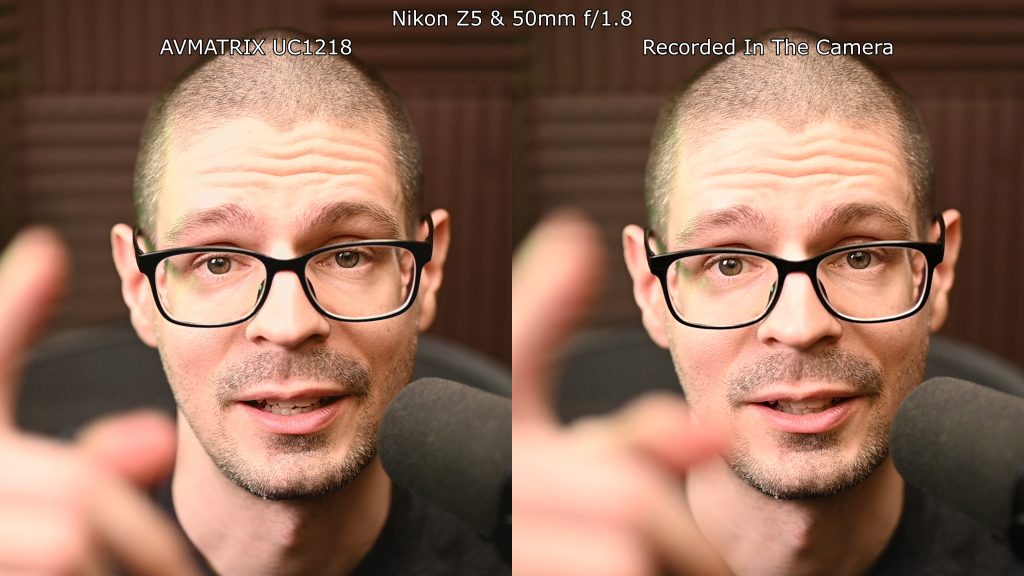
In this test it’s a lot more difficult to notice any difference. I’d say that captured HDMI output pushed into the UC1218 is comparable to the internal recording.
Besides connecting cameras to it you can also capture HDMI from various devices as long as they don’t require HDCP.
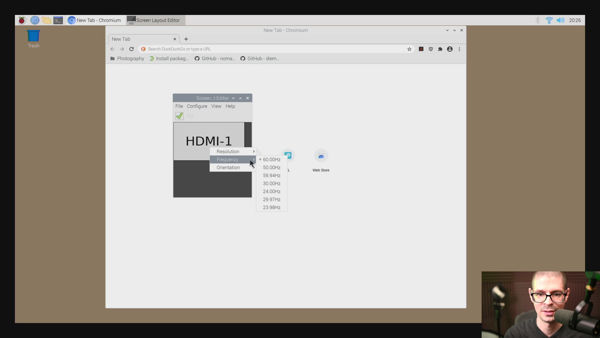
Overall a functional, yet pricey, HDMI USB capture device.
Again, you can check it out through my affiliate links.
- Amazon: https://amzn.to/3QjDRLQ
- B&H: https://bhpho.to/3Gt8Noy
- Adorama: https://adorama.rfvk.net/Jr1Bqv
- ebay: https://ebay.us/nHsv68
As an Amazon, B&H, Adorama, and ebay associate, I earn from qualifying purchases.
Here’s a transcript from the linked YouTube video:
AVMATRIX UC1218 HDMI capture device with professional level features. It has YUY2 output uncompressed 1080p 60 frames a second.
Keep in mind the AVMATRIX did send me this unit to try out and make the video on, I will be keeping it.Build quality on the capture device itself is very nice.
Got the green and a yellowish orange, which I personally like the color scheme, but that’s not super important.
There are some rails on the side. I’m not sure if those would be good for mounting.
Significant heft to it!
Super Speed USB, status, audio in… It’s a line-in so you have to have a stronger signal to make it function. In this case I have a powered microphone. Just to get it working in OBS. Test one two three, testing one two three…
It does come with a USB-C cable. You can tell it’s got the blue connector on the A-side. I have two sets of ports on my computer. One side is standard USB 3, but it’s… it uses a different controller in the motherboard. That one was having issues. Obviously with an uncompressed output you’re going to need a lot of data throughput to make it work properly. You can’t do USB 2, it’s just not going to be enough data.
Here’s the AVMATRIX running.
I’m encoding in h.264 20,000 kilobits a second up to 70,000. A fan in the background just for some type of motion. For comparison’s sake I have this generic USB HDMI capture device.There we go! That is definitely different.
Maybe I can mimic the look of the other one, but clearly this one is, uhh, struggling at those same settings as the AVMATRIX.Goes up to 1080p 60 frames a second. It says it applies with the UVC video capture and YUY2 video output specifications.
Raspberry Pi routing HDMI into the AVMATRIX into a Windows PC. So you’ve got 1080p frequency 60 hertz, AVMATRIX is going at full 60 frames a second.
I was able to connect my Canon EOS M6 Mark II outputting 4K video and it works just fine, but of course you’re still going to get the 1080p 60 frames a second into the computer. Here we know that the M6 Mark II has the ability to do HDR output. I have to change some settings to make that actually happen, so you have the YUY2 rec.709 at the moment, but I’m going to go into HLG full color range, whoa!
Here we’ve got the M6 Mark II in 4k clean output with a neutral profile and also HDR mode enabled. Who knows if it makes any real difference, and I have it set to Rec.2100 HLG mode. If we go into the settings of OBS itself output we have Nvidia HEVC with 150 to 200 megabits per second, so definitely a higher bit rate codec going…
So I should see a difference potentially between this and the other USB capture device.Gonna test the Z5… Z5 currently with the AVMATRIX. I do have the Nikon set to 1/125th of a second shutter speed.
You can tell this is a thinner line.Gonna do quick test again between this and the other capture device. See how it looks, I added a bunch of additional light to the situation. So we’ve got the same color space, same color range… five frames per second.
Clearly this is not able to do the same thing.
Do Rec.709 with this just so it’s reasonable.
Here’s the second test with the Nikon. I still left it down 10 bit, but Rec.709 full color range in this case. 200 megabit maximum 150 standard high quality two pass full resolution.
Now I’m going to do a test where it’s recording internally in the Z5 and through the AVMATRIX. Here’s an internal recording versus the OBS recording and see if there’s any difference with the look of that in the background… This is at 125th of a second shutter speed f/1.8.
Final thoughts on AVMATRIX 1218…
Worked just fine. I was able to do HDR modes with the M6 Mark II. Use the Z5. Use the A6000. No issues with any of my cameras. Worked just fine on the Raspberry Pi.
It does not have the copyright related functionality, so if you connect a Roku or something like that it’s not going to work, but that’s really not the intention of a device like this.
Again, keep in mind that they sent me this to try out make the video on. I will be keeping it.

